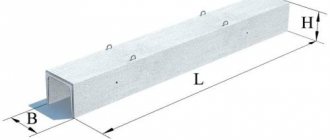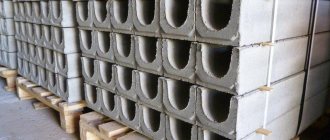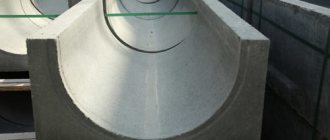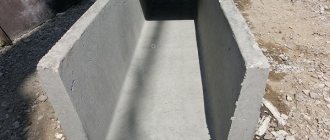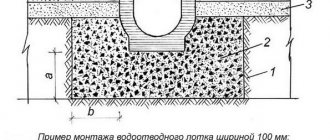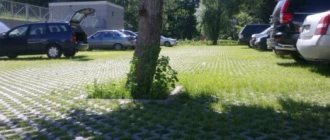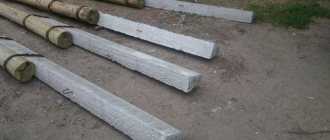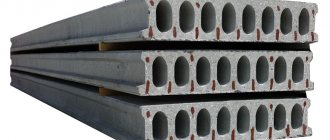Home |Construction |What is a reinforced concrete cable tray?
Date: June 11, 2018
Comments: 0
Due to the increasing pace of construction work in the field of residential, road and commercial construction, a need arose for reinforced concrete products designed for the accelerated and safe laying of electrical cables and the placement of various highways. After all, when communications are located in the soil, there is a high probability of their damage. A proven solution in this case is a reinforced concrete tray. Produced by reinforced concrete enterprises in accordance with the requirements of the standard, reinforced concrete cable tray solves an expanded range of construction problems.
Why do precast concrete companies produce trays?
The production of reinforced concrete trays is carried out at factories of reinforced concrete products in accordance with the requirements of current standards and technical specifications.
Tray structures are characterized by high strength, which allows them to be used in various fields:
- in the field of road construction;
- during the construction of residential buildings;
- in the process of constructing production facilities;
- during the construction of commercial buildings;
- during the construction of garage complexes and parking lots.
Reinforced concrete trays are used in road, residential, commercial construction and other areas
In the field of modern construction, it is impossible to imagine the construction of construction projects, the construction of highways, and the construction of terraces without the use of reinforced concrete trays.
They solve a wide range of problems:
- allow for laying power cables from transformer substations. Communication cables are also located inside the tray cavity;
- used for the construction of water disposal and drainage systems. The drainage trays are covered with a concrete slab, facilitating access during repairs;
- used for laying water supply and sewerage pipes in public utilities. The space in the tray allows you to arrange pipes for various purposes.
Concrete cable trays are used not only in the field of energy construction.
Concrete trays are used to drain water from objects for various purposes:
- zones of industrial enterprises;
- railway lines;
- highways;
- airfield landing and runways;
- multi-storey and private houses;
- recreation areas and car parking;
- hydraulic structures.
Tray products are universal products in demand during the construction of industrial and private facilities. Compliance of serially produced reinforced concrete products with the requirements of regulatory documentation is confirmed by certificates of conformity, as well as quality passports.
The main and main advantages are the efficient use of facility space (roof and underground parts), the ability to reduce costs
Mounting methods
In the case of reinforced concrete cable trays, everything is clear: they are simply laid in pre-dug trenches, then hidden under a layer of earth. Metal and plastic profiles can be attached to the wall in four main ways. It all depends on the specific fasteners:
- self-tapping screws;
- liquid Nails;
- "bugs";
- dowel-nails.
Self-tapping screws are usually used in the process of attaching trays to wooden products, while dowel-nails are suitable for fixing to concrete walls. “Bedbugs” are metal screws. They can be used when there is a need to install a profile on metal walls up to 2 mm thick.
Often, none of the three methods listed above is suitable. For example, you cannot use dowels or any screws to install trays on tiled walls. In this case, liquid nails come to the rescue.
Concrete tray - the main types of tray products
Various types of trays are used in the construction and industrial sectors:
- U-shaped and rectangular profile products for the construction of prefabricated channels. Reinforced concrete cable trays are characterized by increased overall dimensions, allowing free placement of electrical communications for various purposes. The amount of free space inside the trays also allows them to be used to drain significant volumes of storm water. Prefabricated products have an increased margin of safety, as well as increased resistance to corrosion processes. This allows them to be used in soils with high humidity, as well as in the zone of soil freezing;
- trapezoidal telescopic trays of U-shaped configuration. Produced under production conditions, the products have precise overall dimensions. This greatly facilitates the pairing of trays during installation. Installation of telescopic trapezoidal trays is carried out in groups to ensure the required length of the line. The product is intended for installation along roadsides for accelerated drainage of precipitation. A distinctive feature of telescopic trays is their reduced water absorption, which significantly increases the duration of use of products of this type.
According to their functional purpose, design features and installation specifics, trays are divided into the following types:
- products for energy purposes, marked with the designation UBC or UBS;
- drainage and water disposal products marked MZhBL;
- tray channels for thermal routes and highways of type L;
- products for railway communications of the MPL or MSHL brand.
To seal concrete trays, special reinforced concrete slabs are used. The covering of cable trays is marked with the designation PT.
Reinforced concrete cable trays are used for laying electrical cables
What are the types of cable channels for electrical wiring: what is it?
A cable duct is a metal or plastic box for electrical wiring that can be used indoors and outdoors. The design consists of a body and a cover. Most often they have a square or rectangular cross-section. The body can be perforated or solid. The body part and the cover are connected using a special lock.
Plastic structures that can look like skirting boards are popular
Cable boxes are mounted in different systems. They come in a variety of colors and are highly aesthetic. The internal space can be divided by partitions. This allows you to separate low-current and power cables, which are laid separately
When choosing plastic products, you should pay attention to the non-flammability of the material.
Using a wood channel instead of a plinth
There are different types of cable channels:
Mini. The channels have a small diameter and are used for laying Internet, television or telephone lines. 1-2 wires of medium thickness are placed in such a channel. They are made of plastic and attached to the walls using screws and glue. The channel cross-section varies between 10×10 and up to 60×80 mm;
Miniature channels can be made of metal or plastic
Parapet guides. They are made of plastic, but are larger in size. Such structures are installed in apartments and offices. You can adjust the rotation angle from 7 to 45 degrees. It is convenient to connect sockets and switches to such guides. The cross-section of structures varies from 10×20 mm to 100×60 mm. In this case, the profile type can be W-shaped, L-shaped or T-shaped. Also, profiles can be universal or curly;
Parapet products are perfectly fixed to the wall
Skirting. These channels are installed at the junctions of walls and floors. Inside these skirting boards there are cavities for laying wires. The dimensions depend on the width of the diagonal wall, which can be 50 or 70 mm. Such channels are used for any premises and are resistant to temperature changes. Such channels are fastened using self-tapping screws. The joints are covered with corners and plugs;
Option for plinth with installation of wires
Flexible channels. The structures are corrugated and chain. The latter protect the wires from vibrations, mechanical damage and chemical exposure. They are corrosion resistant, flexible and open access. Corrugated structures are made of non-flammable plastics;
Flexible products are often used in office premises for cable routing in difficult areas
Corner ceiling channels. They are plastic parts in the shape of a triangle. The joints are cut at an angle of 45 degrees and closed with plugs. The box has a beautiful appearance and color palette. The size of the internal part can be 40×40 mm;
There may be several partitions inside the corner housing
Floor-standing. Cable trays are required when you need to run wiring to lighting fixtures or to a table. At the same time, the color scheme is not very diverse. The most commonly used palette is white, black or gray;
Floor channels are complemented by inserts for switches
Transparent channels for LED strips. Inside the box there is a partition to which the LED is fixed. The width of the tape can be 5-20 mm.
Channels with LEDs can be located in baseboards
How to choose the right cable channel can be seen in the video:
When choosing products, you need to pay attention to GOST standards for cable channels. The possibility of installation depends on the degree of flexibility and rigidity
Rigid structures can be in the form of boxes with holes or blind boxes. Flexible cable channels are represented by corrugated pipes, tracks and chains.
Corrugated lines make it easier to install wiring in hard-to-reach places
Reinforced concrete cable trays - product advantages
Concrete cable trays can significantly reduce the estimated cost of laying various communications by reducing the duration of laying highways, as well as significantly reducing the labor intensity of the work. From an economic point of view, the use of tray products provides a significant effect. Compared to performing an increased volume of excavation work associated with the need to lay power supply systems and various highways in the ground, installation of trays is less expensive.
Main advantages of the product:
- reliable protection of electrical cables and pipes from the influence of groundwater;
- preventing damage to highways as a result of soil pressure;
- the ability to install trays in wet soils;
- placement of utility networks in trays at the soil freezing level;
- safe location of communications in difficult terrain;
- the possibility of using electrical cables with reduced moisture protection;
- easier access to communications in case of need for repairs and maintenance;
- possibility of placing separating metal structures and special partitions inside the tray.
One of the advantages of trays is ease of installation. To install products in the soil, a trench is made into which U-shaped channels are laid. Coating waterproofing is mandatory when joining cable channels. After placing communications in the channel, the joint areas are treated with sealing mastic, a cover is installed and soil is backfilled.
All reinforced concrete trays, and heating main trays in particular, must have sufficiently high thermal and waterproofing to ensure protection of heating main pipes from environmental aggression
Professional builders are convinced of the following advantages of the product:
- increased strength properties;
- ability to perceive temperature fluctuations;
- Possibility of operation in conditions of high humidity;
- reliability and long service life;
- Possibility of use in aggressive environments;
- tightness of the box-shaped structure;
- practicality and maintainability.
If it is necessary to carry out activities related to the maintenance of communications and scheduled inspections, the soil should be removed to the level of the cover, the concrete tray ceiling should be dismantled, and damaged pipes should be replaced.
After completing the repair work and applying mastic to the mating surfaces, a cover is installed and soil is filled. Reinforced concrete channels are not dismantled and can be used for decades.
Installation
Installation of trays consists of the following steps:
- Marking the working surface according to the design documentation, as a result of which a center line is drawn on the wall or ceiling;
- Drilling holes for fasteners for supporting elements;
- Fastening of supporting elements: brackets, shelves, suspensions, consoles;
- Fastening to the supporting elements of trays and shelves (for mounting trays on the wall);
- Connecting sections located at an angle relative to each other using turns, tees, and crosses.
The difference in installing trays on the wall and ceiling lies in the type of support elements used. When installing a tray horizontally, cable shelves with long racks are used, while when installing boxes near the ceiling, their analogues with shorter racks are used, which have a platform at the base with two holes for attaching fittings to the studs screwed into the ceiling. Also, to attach mesh trays to the ceiling, special hangers are used, consisting of a long pin, two square clamping pads, and two nuts.
At the final stage of installation, communications are placed in cable trays and a full list of work is carried out to connect and check them, in accordance with the current operating rules for electrical installations. Laying live communications is prohibited.
Reinforced concrete tray - design features and dimensions
Structurally, the reinforced concrete tray is a prefabricated structure of a U-shaped profile, for the manufacture of which the following materials are used:
- branded concrete made on the basis of Portland cement marked M400 and higher. Sand purified from impurities, granite screenings and crushed stone are used as filler. If it is necessary to use products in aggressive environments, sulfate-resistant cement is used. High-quality concrete marked B15-B25 contains special additives and modifiers that increase the moisture resistance of the material, strength characteristics and frost resistance;
Trays are made of concrete grade M-200 and higher, strengthening it with steel rods from class A-I, A-II reinforcement or Bp-I wire
- high-quality steel reinforcement, the characteristics of which meet the requirements of regulatory documents. A spatial reinforcement frame is made from metal rods of class A1-A3, the configuration of which corresponds to the profile of the cable channel. By strengthening concrete with steel reinforcement, the strength characteristics of a reinforced concrete structure, which can withstand significant loads from the mass of the soil and frost heaving of the soil, are increased.
The design of the product and the composition of concrete allow the product to be used in various climatic regions of the country. Reinforced concrete products have unique characteristics, such as an increased margin of safety, increased moisture resistance, resistance to freezing and correct geometry. The floor slabs supplied with the trays act as covers and are made from the same building materials as the products themselves.
When performing installation operations, products of various sizes are used. Manufacturing companies produce a wide range of additional trays, allowing you to select a product of the required length.
Depending on the design, the overall dimensions and weight of products are standardized and vary within the following limits:
- length is 0.74-3.95 m;
- the width is in the range of 0.28-2.38 m;
- height is 0.28-1.18 m;
- weight varies in the range from 100 to 2700 kg.
If it is necessary to adjust the dimensions of products to certain dimensions, equipment for diamond cutting of reinforced concrete is used.
What is important to know
The main element of the electrical box design is a U-shaped profile, the length of which is 2 meters. The product kit includes a lid to close the internal cavity of the product. The profile is attached to the wall or ceiling, power cables or control wires are laid in it, after which the wiring is closed with a quick-release cover. The material from which the boxes can be made is galvanized steel, aluminum or durable plastic that does not support combustion. You can learn more about what types of cable channels there are in our separate article.
The range of products that perform cable channel functions is very diverse, as can be seen in the photo above. These can be wall boxes and floor skirting boards, as well as corrugated pipes and trays. As a rule, skirting boards are designed to accommodate low-current cables and wires; corrugated pipes and trays are used for installation in utility rooms and on the surface of external walls. For arranging the energy supply of premises, the most popular are wall-mounted electrical boxes made of plastic with a double-sided lock. In addition to the most common white cable channels, the industry has launched the production of products in a wide variety of colors that can complement the interior of any room.
Tags: sconce, view, harm, choice, house, , clamp, protective, cable, cable, how, design, crown, , tray, installation, voltage, rule, wire, project, laying, cable laying, start, , size, repair, row, garden, light, LED, ten, type, current, triangle, , installation, photo, shield
How concrete cable trays are made
Serially produced reinforced concrete cable trays are manufactured using industrial technology.
Depending on the conditions set by the drainage project, solid or with an opening for vertical drainage are selected.
It provides for the following operations:
- Cutting blanks of the required size for the manufacture of reinforcement lattice elements.
- Assembly of a spatial reinforcement frame using electric welding or knitting wire.
- Surface treatment of metal frame rods using anti-corrosion compounds.
- Applying lubricant to the inner surface of the mold to facilitate its disassembly after the concrete has hardened.
- Placing the finished metal structure in the mold and ensuring its immobility.
- Making concrete mortar by mixing ingredients in a bunker in accordance with the recipe.
- Pouring the prepared concrete mixture into a metal mold and ensuring its immobility.
- Dismantling of metal formwork and curing of finished products, followed by quality testing in laboratory conditions.
During the quality control process the following is carried out:
- external inspection of products;
- rejection of products with defects;
- control of geometric dimensions;
- checking the compliance of characteristics with standard requirements.
Finished products are marked with paint by applying an alphanumeric index to the end surface of the tray.
Reinforced concrete cable tray - application specifics
The products are used in various options:
- ground The trays are installed on a previously prepared surface and, after laying the lines, are closed with lids. The advantages of this installation method are ease of access to the inside of the gutter, as well as reduced installation costs;
- buried The gutters are placed in a dug trench on a level surface. After laying communications and installing covers, the trays are filled with soil. In this case, access to paved highways is excluded.
Depending on the specific conditions and specifics of work in the construction industry, both options are used.

